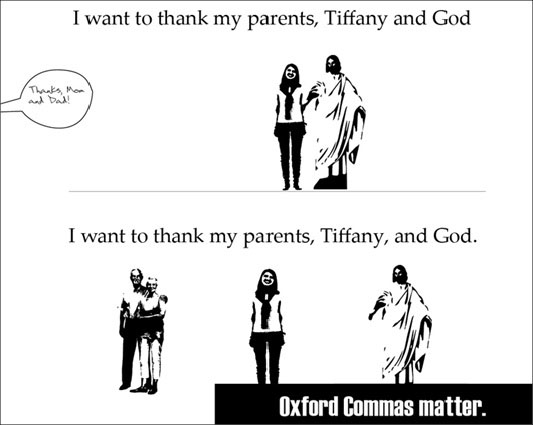The Don'ts of Comma Sutra in Copywriting
Let's eat Grandma!
OR
Let's eat, Grandma!
Punctuations possess the power to change the meaning of a sentence. Be it blogs, social media updates or even the product descriptions on your website — punctuations play a crucial role in communicating the message more effectively. While a poorly punctuated piece offers little or no motivation to continue reading, these neglected darlings contribute to an effortless and seamless reading experience. In this blog, we will be looking at the important don'ts of punctuation and formatting that a copywriter, or for that matter any professional writer, must live by:
1. DON'T PUT APOSTROPHES WHERE THEY DO NOT BELONG
Apostrophes are majorly used for 2 things: to show possession or belongingness of something or someone (Sakshi's diary), and to display contractions (They're = They are). The placement of apostrophes remains essential to the formation of a sentence and its meaning. One must also keep in mind that when they want to show possession to something which is plural and ends with an 's', the use of apostrophe will change (Parents' bedroom).
2. DON'T USE QUOTATION MARKS WHEN NOTHING IS BEING QUOTED
Quotation marks are often misused with single and double quotations being used alternatively. Let's understand the difference between the two to avoid making the same mistake. We use quotation marks with direct quotes, with titles of certain works, to imply alternate meanings, and to write words as words. Single quotation marks, on the other hand, are used as quotes within quotes. Single quotes are also used in parentheses for translations and for highly specialized terms in certain fields.
3. DON'T MISS OR OVERUSE COMMAS
While a period is used to end a sentence, the comma is used as a soft pause to separates words, ideas or clauses. Commas can be tricky but don't let them trip you up. The 'writeous' use of a comma can only be mastered with plenty of reading and years of practice. If you want to play it safe and get your commas right, here are two tips:
- Write as you would speak, so as to get the pauses right
- Craft sentences that are neither too long, nor too short
In the comma sutra of things, there is a much-debated Oxford Comma too, which will need a dedicated point of its own.
4. DON'T USE HYPHEN AND DASH ALTERNATIVELY
The hyphen, the em dash, and the en dash are all horizontal marks of varying lengths. Each functions quite differently from the other.
- Hyphen (-) is the shortest of the three and is used most commonly to connect words (Well-being and advanced-level, for example).
- Em Dash (—) can be used in pairs like parentheses—that is, to enclose a word, or a phrase, or a clause (as we've done here)—or they can be used alone to detach one end of a sentence from the main body. We use the em dash to create a strong break in the structure of a sentence.
- En Dash (–) is slightly longer than the hyphen but not as long as the em dash. We use it most commonly to indicate inclusive dates and numbers: July 9–August 17; pp. 37–59.
5. DON'T FORGET THE OXFORD COMMA. IT MATTERS.
"When there is an 'and', why do you need a comma?"
Every copywriter who has used the Oxford comma has faced this question. Even though this is one of the most debated punctuations, its use somehow makes sense. Have a look at the picture below and think about it. Let us know your thoughts in the comments section.

Credits: digitalsynopsis.com
Punctuations, like spelling, are a tool of the copywriting trade. It is important that you pay close attention to the rules if you want to get your message across effectively. Since punctuations is a vast topic, we've only covered a few basic punctuations in this blog. However, you can let us know if you want to know more about the specifics within the subject.
